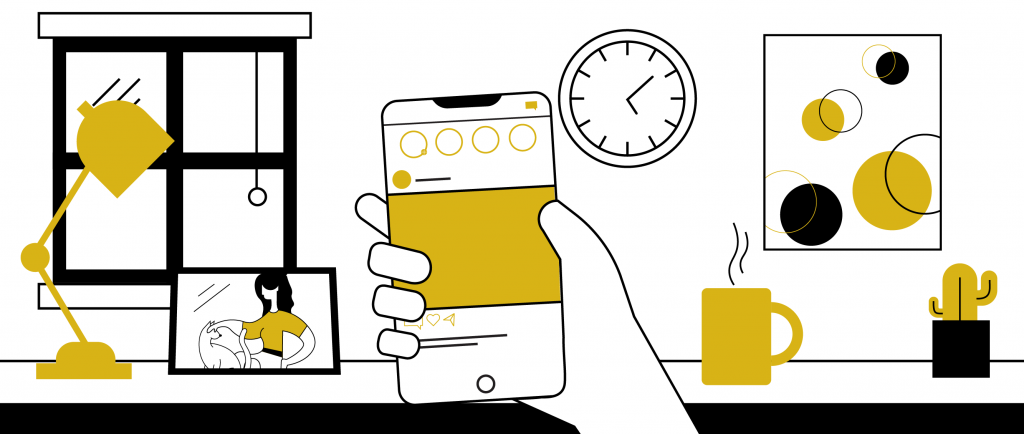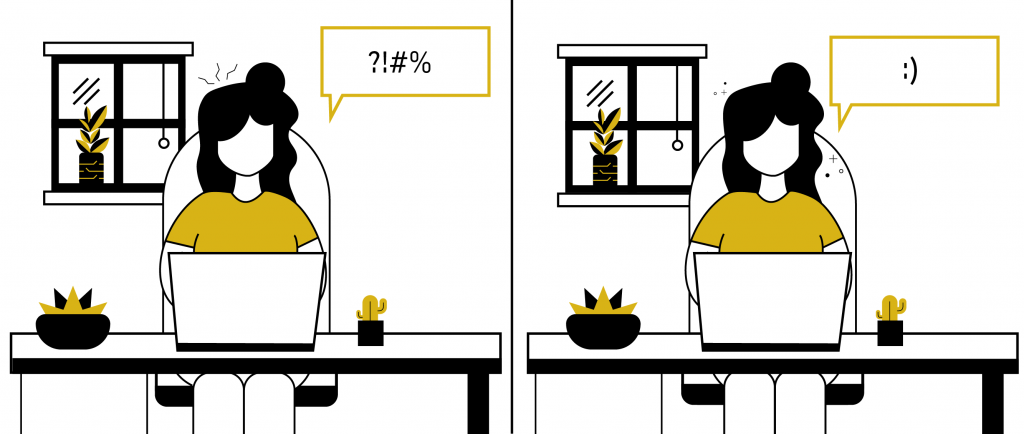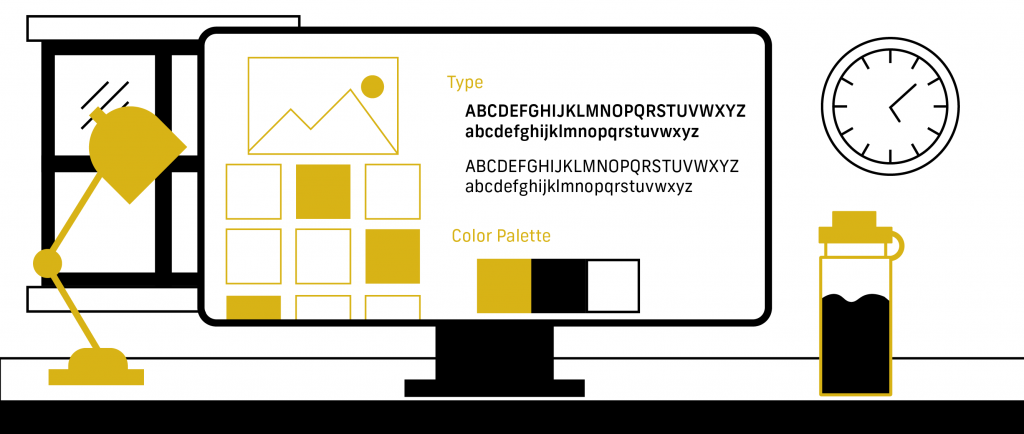UI and UX are terms that get thrown around frequently in the modern tech field. They are of equal importance in the world of interface design but can be pretty confusing, especially for those who are new to the practice. No worries, we get why this could be frustrating . We’re here to help guide you through the difference between UI and UX, what each of them stands for, and how a good CMS can benefit both.

What is UI Design?
UI is an acronym for User Interface, or more specifically, the visual format in which a user interacts and controls a computer/machine. This can be applied to things like icons, buttons and layout on a website. Think of the placement of important functions on a property management website.
Menus are typically located in the standardized top left for the fastest navigation while the crucial call-to-action buttons are put front and center to put the most important functions in a prime location. The user interface influences how easy it is for the user to complete their required tasks while also appearing eye-catching and impressive. UI is what makes it possible for you to seamlessly interact with your phone everyday.
UI Design Elements
Things like gear icons to represent settings, a phone to represent calls, and so on and so forth, all make it possible for you to not only operate your own phone but to also develop a sense of intuition for operating similar interfaces in the future. Every component of the User Interface is tirelessly worked over and considered in order to make the experience as easy as possible for the user. Now, speaking of experience, that leads us to our next acronym, UX.

What is UX Design?
UX is an acronym for the term User Experience. User experience is quite simply, the experience a user has when interacting with an interface. While a large majority of the user experience is focused on the interface itself, it is important to remember that this term applies to the entire experience a user has with your apartment website and property as a whole. The inventor of the term “user experience,” Don Norman, says that user experience “encompasses all aspects of end-user’s interaction with the company, its services and its products.”
A good or bad user experience can directly impact the image of your company and the user’s perspective of how successful the product is. If your property management site doesn’t load properly, or a prospective resident has a frustrating time navigating it, it is likely the resident will relate the bad experience to your property. So in short, UX is a little term with a big impact.
The Relationship between UI and UX Design
Now that we know the difference between UI and UX, and why they’re both individually important, we can get into how they depend on each other. The most successful user interface typically has a strong back bone in user experience. The UX designers provide a knowledgeable and comprehensive understanding of what the end user is looking for and what they want the product to do in order to provide a road map of how to best achieve that.
User Interface Aesthetics and Function
The UI designers then take that roadmap and create an aesthetically pleasing yet effective interface that perfectly fits the target user for their product. They make visual decisions such as color and graphics based on information the UX designer provides such as how much time the user will be spending per session and what feeling the user is looking for when interacting with the product. So, in simple terms, without UX, even a thoughtful and streamlined interface would leave your users confused, frustrated or left feeling like their target use for the product has gone unheard. Without UI, well, you wouldn’t have anything for your users to look at and interact with.

How a CMS Improves Both UI and UX
The world of UI and UX design can be unwelcoming to newcomers, especially those without a strong background in visual design. If you don’t have that experience, don’t sweat it. No one is expecting you to become a talented UI designer overnight. That’s why CMS–content management systems– exist. With a good CMS, you can add in all of the content you need for your property and easily customize your site, all with the peace of mind that your UI and UX will be effective for current and prospective residents.
Why? Because the hard work of designing well-thought-out user interfaces have already been worked into the CMS! Think of it as writing a paper in a document program. You focus all your hard work on content creation, and the system automatically formats it to how you need it. A CMS works the same. You simply input your content into the template of your choice, and the system writes the HTML/CSS code for you.
What Makes for an Ideal CMS UX Design?
When it comes to looking for an ideal CMS, there are a few important features to look out for. A good CMS contains a centralized dashboard where you can easily access the customization features of your apartment website. Another crucial feature to look for in a CMS is SEO Optimization. This ensures that your property management website is utilizing vital keywords that will skyrocket your position in search engines above competitors and increase the overall traffic to your site. Lastly, a CMS that offers mobile responsive features is a must. Many people search for apartment websites on their phones, and the last thing you want is a beautifully designed site that only a portion of your prospective residents may see.
Not sure where to start looking for a CMS? Well, look no further. Quext Websites offers a CMS tailored specifically for managing and optimizing apartment websites. It offers features such as SEO optimization, dashboard reporting, mobile responsiveness, and most importantly, well-researched templates with UI/UX aimed specifically for showing off your property in the best possible light.
CMS UI/UX isn’t as Complicated as You’d Think
The world of UI and UX can be intricate, detail oriented, and a lot of hard work, but that doesn’t mean you can’t use those concepts to your advantage. With a good CMS by your side, you can get a handle on your property’s website and create an optimal interface to impress both prospective and current residents.


